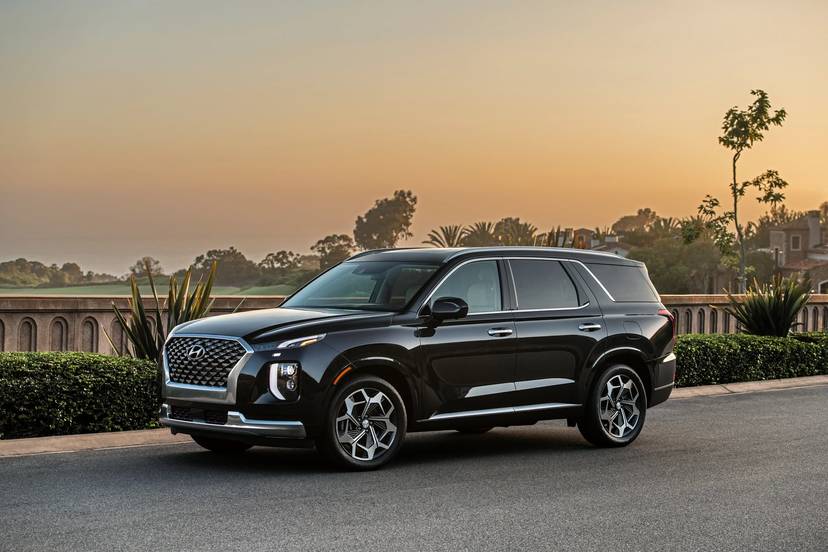
Hyundai gave its fifth-generation Accent sedan the green light for U.S. dealers, but a hatchback variant that’s available elsewhere won’t make it stateside. Hatch-o-philes can consider the redesigned Kia Rio, a platform sibling that’s available as a hatch. Compare the Accent and Rio here, or stack up the 2018 and 2017 Accent here.
The Accent comes in SE, SEL and Limited trim levels (compare them here), all with a 1.6-liter four-cylinder engine. The SE has a standard six-speed manual transmission or optional six-speed automatic; the SEL and Limited have only the automatic transmission. We evaluated a Limited and an SE manual.
Outside and In
The redesigned Hyundai Accent wears its scaled-down-Elantra styling well. Even SE models have painted side mirrors and door handles, avoiding the budget-car giveaway of black plastic. Alas, the dashboard blows that cover: It’s an unremarkable dome-and-shelf routine with center controls slapped down the middle — a shape little different from any interior a decade ago. Styling is subjective, but the dashboards in a few other subcompacts — the Rio and Toyota Yaris iA spring to mind — have interesting layered designs. The Accent’s does not.
The Accent’s infotainment system is generous, at least. SE models get a 5-inch touchscreen, while SEL and Limited trims have a 7-inch unit with Android Auto and Apple CarPlay. Those are nice provisions for this small-car class, especially because all versions have proper shortcut buttons, plus volume and tuning knobs. All systems have Bluetooth phone and audio streaming, plus the soon-mandatory backup camera with dynamic guidelines.
Most controls feel weighty and secure, and SEL and Limited trims have a padded center armrest, but quality is otherwise spartan. The seats have rough-hewn cloth upholstery even in Limited models, and a mess of hard, shiny plastic surrounds them. Shoppers on a shoestring budget need not accept such limitations: The Yaris iA and Ford Fiesta, for example, have notably higher quality.
Agreeable Road Manners
Like the Rio, the Accent has generous ride comfort on its standard 15-inch wheels and high-profile P185/65R15 tires. The 17-inch wheels and P205/45R17 tires on Limited trim levels introduce some busyness and road noise over uneven surfaces, but the effect is well short of harsh. It’s controlled, too, with little bouncing or floatiness over broken pavement, but it doesn’t stay that way if you add weight — especially over the rear axle. Our Limited test car rode a touch firmer with two adults aboard, but a third adult in the backseat turned ride quality downright harsh, with choppy suspension response over bumps of all sizes.
At least the new Accent’s pint-size four-cylinder is up to the task, with immediate accelerator response up front. And the 1.6-liter (130 horsepower, 119 pounds-feet of torque) delivers enough power at city speeds to sustain the oomph even with multiple adults aboard. Driving solo, highway passing is acceptable, if noisy — both from engine and wind noise. The six-speed automatic downshifts quickly, though it sometimes hunts for gears before settling on the right one.
The manual transmission has medium throws, a large shift knob and a light clutch. For parents who want to teach three-pedal driving to their teenage children — more for character-building than practical application at this point — the Hyundai Accent’s stick is a quick learn, though it comes at a slight mileage penalty: 31 mpg combined in EPA ratings, versus 32 mpg with the automatic. Both figures are class-competitive.
Steering is free of the prior Accent’s numb feedback, and its quick ratio evokes the Yaris iA or Honda Fit. Modest body roll limits the fun, but road-holding is impressive with the Limited trim’s wider Continental tires, which stave off eventual understeer to impressive limits. Not so with the skinnier rubber on the SE and SEL (also Continentals). For all their benefit to ride comfort, they slide early and often.
Value and Safety
Final Thoughts
I suspect many shoppers will cross-shop the Accent with its Kia sibling, which comes in both sedan and hatchback forms. The hatch has a roomier backseat versus the Accent’s cramped bench, but the Accent gets more equipment in top trim levels. Few shoppers will benefit from that, however: Hyundai officials expect more than half of all Accent shoppers to buy the SE and just 10 percent to get the Limited.
In a value-conscious group like subcompacts, the 2018 Accent is acceptable in many ways and impressive in a few. That may not overcome shopper sentiment against a class that’s under steady sales decline. But if you’re among the shrinking group of consumers who want an entry-level sedan — and if you’ve read this far, I suspect you are — the new Hyundai Accent is worth a look.
Cars.com’s Editorial department is your source for automotive news and reviews. In line with Cars.com’s long-standing ethics policy, editors and reviewers don’t accept gifts or free trips from automakers. The Editorial department is independent of Cars.com’s advertising, sales and sponsored content departments.








































